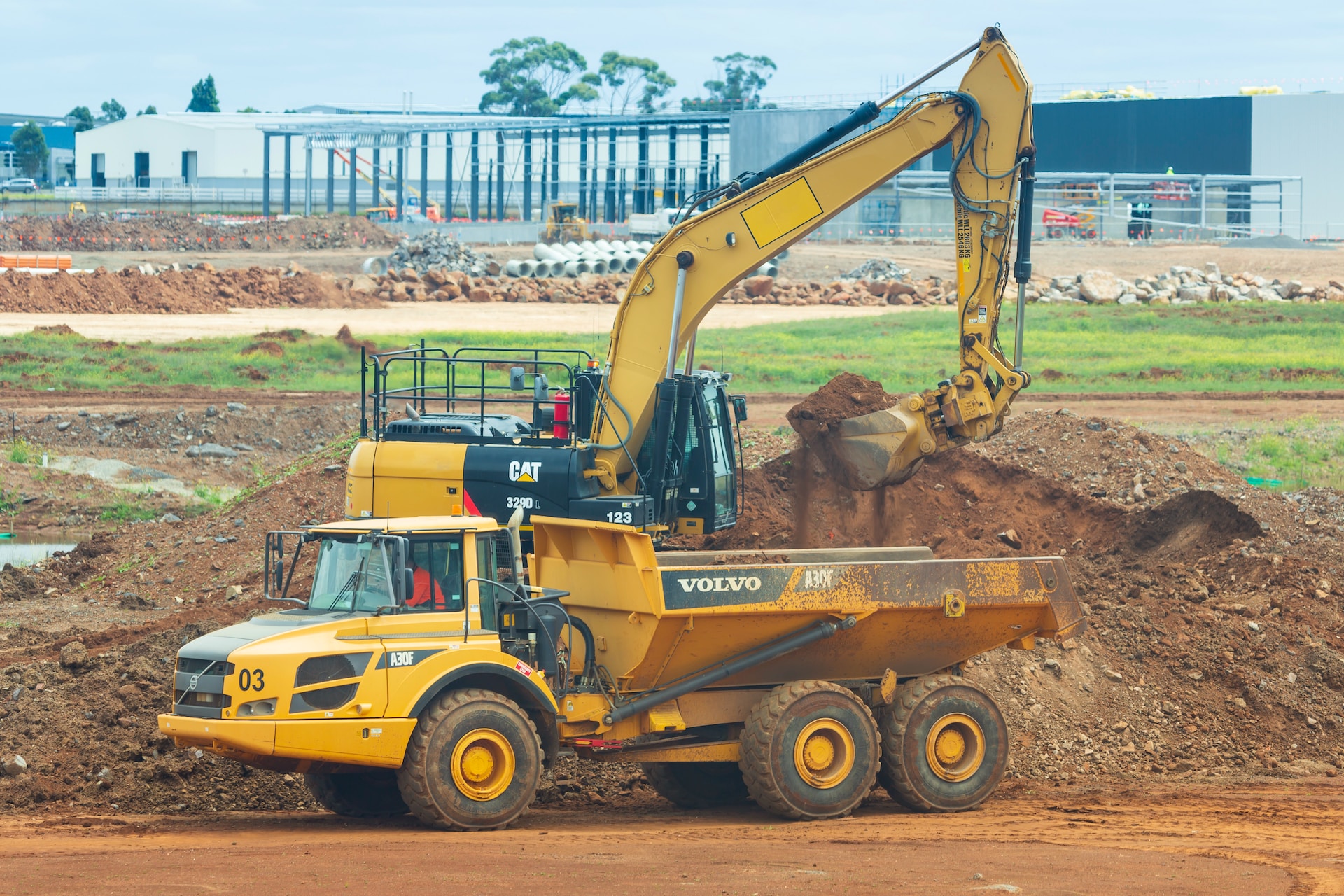

In today's highly competitive business landscape, small businesses need access to the right equipment to stay ahead. However, acquiring or upgrading equipment can be a significant financial challenge. This is where equipment financing comes into play. Equipment financing is a specialized form of funding that allows small businesses to acquire or lease essential equipment without depleting their working capital.
Equipment Financing: Empowering Small Businesses to Thrive
Understanding Equipment Financing
Equipment financing refers to the process of obtaining funds specifically for the acquisition or lease of equipment. Equipment financing helps small businesses acquire necessary machinery, technology, vehicles, or equipment cost-effectively. Additionally, this financing option enables businesses to expand their capabilities, enhance productivity, and stay competitive in the market.
Advantages of Equipment Financing:
- Preserves Cash Flow: Equipment financing allows businesses to acquire essential equipment without depleting their cash reserves. Instead of making a large upfront payment, they can opt for affordable monthly payments, preserving their working capital for other operational needs.
- Flexibility: Equipment financing offers flexible repayment terms tailored to the business’s financial situation. Businesses can choose from various repayment options, such as fixed or variable rates, depending on their preferences and cash flow capabilities.
- Access to High-Quality Equipment: Financing enables businesses to acquire new or upgraded equipment that may otherwise be beyond their immediate budget. This access to modern and efficient equipment can enhance productivity, efficiency, and competitiveness.
- Tax Benefits: In many cases, equipment financing allows businesses to take advantage of tax benefits. The interest paid on equipment financing is often tax-deductible, reducing the overall cost of financing.
- Preservation of Credit Lines: Equipment financing is a separate credit facility, which means it does not affect existing credit lines. Businesses can preserve their credit availability for other needs, such as working capital or unforeseen expenses.
- Hedge against Obsolescence: Technology and equipment advancements happen rapidly. By choosing equipment financing, businesses can upgrade or replace equipment more easily, ensuring they stay competitive in their industry.
- Simplified Budgeting: Equipment financing offers predictable monthly payments, making it easier for businesses to budget and manage their cash flow effectively. This stability allows for better financial planning and reduces the risk of unexpected expenses.
- Potential for Revenue Generation: Acquiring new equipment can lead to increased productivity, efficiency, and revenue generation. By investing in modern equipment, businesses can improve their operations and offer better products or services to customers.
Types of Equipment Financing:
Equipment Loans:
- Equipment loans are traditional loans obtained from financial institutions or lenders specifically for equipment purchases. The equipment itself serves as collateral for the loan.
- Benefits and Considerations: Equipment loans offer fixed interest rates, flexible repayment terms, and the ability to retain ownership of the equipment. However, creditworthiness and down payment requirements may apply.
Equipment Leasing:
- Overview and Features: Equipment leasing allows businesses to use equipment for a specific period by making regular lease payments. At the end of the lease term, businesses can choose to return, purchase, or upgrade the equipment.
- Benefits and Considerations: Equipment leasing provides flexibility, lower upfront costs, and the option to upgrade to newer equipment. However, businesses don’t own the equipment, and long-term costs may be higher.
Examples of Equipment Financing:
- Manufacturing Equipment Financing: A manufacturing company needs to upgrade its production line to improve efficiency and meet increased demand. Instead of purchasing the equipment outright, the company chooses equipment financing to spread the cost over time. This enables them to acquire necessary machinery while preserving cash flow for other expenses.
- Medical Equipment Financing: A healthcare facility needs advanced medical equipment for better patient care and services. Equipment financing enables them to acquire state-of-the-art devices like MRI machines without a large upfront payment, staying competitive in the industry.
- Technology Equipment Financing: A tech startup needs the latest technology for operations and development. They choose equipment financing to acquire it without depleting their capital, preserving cash for research, development, and marketing.
- Transportation Equipment Financing: A logistics company expands its fleet with equipment financing, acquiring new trucks or vans without a significant upfront investment. This scales their operations, improves efficiency, and serves a larger customer base.
- Construction Equipment Financing: A construction company needs specialized machinery, such as excavators, bulldozers, or cranes, for a specific project. Instead of purchasing the equipment outright, the company chooses equipment financing, allowing them to use the machinery for the duration of the project. This flexibility enables them to complete the project on time and within budget, without the long-term commitment of ownership.
The Equipment Financing Application Process:
- Preparing Documentation: Small businesses need to gather necessary documents, including financial statements, tax returns, business plans, and equipment quotes or invoices.
- Researching Lenders: Small businesses should research and compare different lenders to find the best fit for their needs, considering factors such as interest rates, repayment terms, and lender reputation.
- . Submitting the Application: Businesses complete the application form provided by the lender, providing detailed information about the equipment, its cost, and the desired financing amount.
- Evaluation and Approval: Lenders review the application, assess the business’s creditworthiness, and make a decision based on factors like financial stability, credit history, and the equipment’s value.
Considerations and Risks of Equipment Financing:
- Total Cost: Equipment financing may have higher costs compared to upfront cash purchases. Businesses should carefully evaluate the total cost of financing, including interest rates, fees, and any additional charges over the repayment period.
- Repayment Obligations: Equipment financing requires businesses to commit to regular payments over a specific period. It’s crucial to assess whether the business’s cash flow can support these ongoing obligations without causing financial strain.
- Equipment Value: Businesses should consider the equipment’s expected lifespan and potential depreciation. If the equipment becomes obsolete or loses significant value over time, the financing may not align with the equipment’s long-term worth.
- Creditworthiness: Lenders typically evaluate the business’s credit history and financial stability when considering equipment financing applications. Businesses with lower credit scores or financial challenges may face more stringent approval requirements or higher interest rates.
- Financial Impact: Equipment financing affects the business’s debt-to-equity ratio and overall financial position. Before committing to financing, businesses should assess the potential impact on their financial statements and long-term financial goals.
- Ownership and Flexibility: Depending on the financing arrangement, businesses may not own the equipment outright until the financing is fully repaid. This lack of ownership may limit flexibility, such as the ability to sell or upgrade the equipment during the financing period.
- Early Termination Penalties: Some equipment financing agreements may impose penalties for early repayment or termination. Businesses should carefully review the terms and conditions to understand the potential costs associated with early termination or refinancing.
- Vendor and Lender Relationships: Businesses should research and choose reputable vendors and lenders for equipment financing. Working with trustworthy partners ensures transparency, fair terms, and reliable customer support throughout the financing period.
- Preparing necessary documentation can streamline the leasing process.
Market Trends and Outlook:
- Technological Advancements: Advancements in technology have revolutionized the equipment financing industry, making the application and approval process more streamlined and accessible for small businesses.
- Industry-Specific Financing: Equipment financing providers have tailored their offerings to cater to specific industries such as healthcare, construction, manufacturing, and transportation, allowing businesses to access industry-specific equipment financing solutions.
- Increased Demand: The demand for equipment financing has been on the rise, driven by the need for businesses to upgrade their equipment, improve productivity, and stay competitive in the market.
- Future Outlook: The equipment financing market is expected to continue growing as more small businesses recognize the advantages of equipment financing and seek to leverage it for their growth and success.
Conclusion: Equipment financing serves as a valuable tool for small businesses to acquire essential equipment without straining their finances. By leveraging equipment financing, small businesses can preserve working capital, access state-of-the-art equipment, and enhance cash flow. Whether through equipment loans or leasing options, businesses have the flexibility to choose the financing solution that best suits their needs. With technological advancements and industry-specific financing options rising, the equipment financing market is set for growth. Consequently, this growth empowers small businesses to thrive and achieve their goals in a dynamic and competitive business environment.
What’s New



